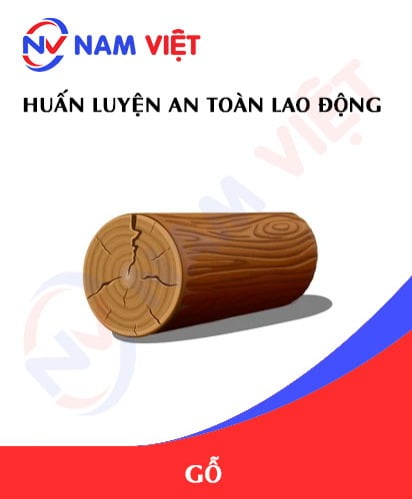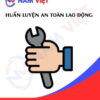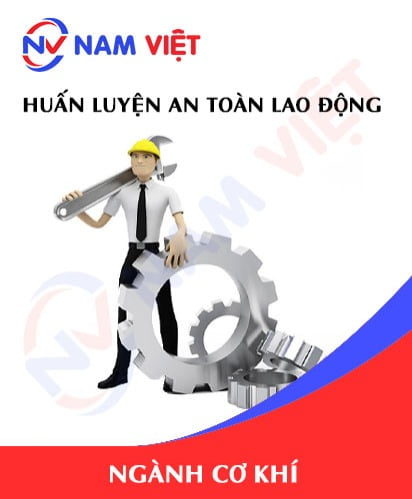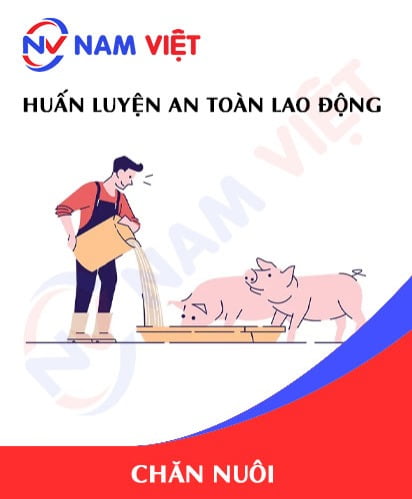Occupational Safety Training for the Woodworking Industry
99,000 ₫
Note: The price above is calculated per person. Prices may vary depending on the number of trainees participating in the course and market fluctuations. For more accurate pricing support, please refer to the quotation or contact our consultant directly.
The woodworking safety training course is a course that equips knowledge of group 3 occupational safety. The course will raise awareness of how to prevent workplace accidents during the production operation process for trainees. Accordingly, the occupational safety training content is closely based on Article 18 Decree 44/2016/ND-CP.
Table of Contents
Toggle1. Overview of the Wood Industry
a. What is the wood industry?
- The wood industry is the field of manufacturing, processing, finishing, and trading products related to wood and wood-based products. Wood products include furniture, doors, flooring, plywood, beds, cabinets, door handles, lamp posts, decorative products, children’s toys, and many other products.
- The wood industry is a key economic sector of Vietnam, contributing significantly to the country’s GDP and exports. By the end of 2020, Vietnam’s wood industry had achieved an export turnover of wood and wood products worth 13.17 billion USD, an increase of 16.4% compared to the same period in the previous year. The main export products were glued wood, furniture, and other crafted wood products.
- However, in recent times, Vietnam’s wood industry has also faced many challenges, such as a lack of clean wood raw materials, inefficient investment, poor product quality, and fierce competition from other countries in the region and the world.
- With these challenges, Vietnam’s wood industry continues to reform its manufacturing structure, focusing on developing high-value-added products and improving product quality to meet the needs of the international market. Vietnamese wood businesses are also focusing on investing in technology and training human resources to enhance their competitiveness.

b. Types of wood manufacturing machinery
Types of wood manufacturing machinery include:
- Sanding machine: used to smooth wood surfaces, ensuring the gloss and aesthetic appeal of the product.
- Wood saw: has the function of cutting wood into different sizes and shapes.
- Wood lathe: used to create wood details such as table legs, chair legs, spinning tops, handles, etc.
- Wood drill: helps create holes on the wood surface for other details such as nails, nuts, screws, etc.
- Wood grinder: used to polish the edges of products and help create more complex shapes.
- Edge banding machine: helps to band wood edges to create finished products.
- Wood press: used to compress and press wood panels into different forms.
- Paint sprayer: helps to spray paint on wood products, creating colors and protecting the wood surface from external factors.

c. Typical businesses in the wood industry
Typical businesses in the wood industry in Vietnam include:
- Hoa Phat Group: is one of the leading wood manufacturing, trading, and exporting groups in Vietnam. Hoa Phat specializes in manufacturing and supplying industrial wood products such as plywood, veneer, kiln-dried wood, and products from natural wood such as sofas, dining tables and chairs, beds, cabinets, bookshelves, etc.
- Quoc Cuong Gia Lai Group: is one of the leading businesses in the field of wood manufacturing and trading in Vietnam. Quoc Cuong Gia Lai specializes in manufacturing high-end wood products such as wooden doors, wood flooring, kitchen cabinets, furniture, etc.
- Tan Hoang Minh Joint Stock Company: is one of the leading companies in the field of manufacturing and supplying building materials, furniture, and high-end wood products in Vietnam. Tan Hoang Minh specializes in manufacturing wood products such as plywood, veneer, wood flooring, furniture, fine art wood products, etc.
- Duc Thanh One Member Co., Ltd.: is one of the leading businesses in the field of wood manufacturing and export in Vietnam. Duc Thanh specializes in manufacturing and exporting wood products such as plywood, veneer, wood flooring, high-end wood furniture products, etc.
- Tan Tien Phat One Member Co., Ltd.: is one of the leading companies in the field of wood manufacturing and export in Vietnam. Tan Tien Phat specializes in manufacturing and exporting wood products such as plywood, veneer, wood flooring, furniture, etc.
- Duc Thanh Wood Processing Joint Stock Company is one of the units specializing in manufacturing kitchen utensils, household appliances under the brand Go Duc Thanh, the high-end brand ChopChop, and children’s toys Winwintoys in Vietnam.
d. Specific jobs in the wood industry
The wood industry is one of the large manufacturing industries in Vietnam and provides many jobs for workers. Specific jobs in the wood industry include:
- Design engineer: A person doing this job needs knowledge of design and machine engines to design products from wood such as furniture, doors, wood flooring, and other wood products.
- Manufacturing technician: The job of a manufacturing technician is to supervise the manufacturing process to ensure product quality, increase productivity, and reduce manufacturing costs.
- Machinery operation technician: The person doing this job is the one who supervises and maintains manufacturing equipment and machinery and ensures they operate effectively.
- Manufacturing worker: The job of a manufacturing worker is to perform the manufacturing steps, from cutting, polishing, grinding, gluing surfaces to assembly and product packaging.
- Sales: The job of a sales employee in the wood industry is to find customers, negotiate, and sell wood products.
- Accountant: The person doing this job is responsible for managing and supervising the company’s expenditures and revenues, processing invoices, and tax reporting.
- Quality control: The job of quality control is to ensure that products meet quality and safety standards for users.
- Quality management staff: The person doing this job is responsible for supervising the manufacturing process and ensuring that products meet quality and safety standards.
e. Products in the wood industry
The wood industry is a wood processing industry, manufacturing products from wood, including many different types of products such as:
- Sawn timber: This is wood that is sawn into small pieces of a certain thickness to produce many different products such as plywood, floor panels, glued panels, etc.
- Plywood: This is a product made from pressed wood and glue to form a panel of uniform thickness.
- Floor panels: This is a type of plywood used for flooring, which is highly durable and can withstand gravity and friction.
- Glued panels: This is a product made from many layers of sawn timber glued and pressed together, with a uniform thickness.
- Cabinet frames: These are wood planks that are sawn and crafted into the component parts of a cabinet.
- Furniture: Includes products such as tables and chairs, beds, cabinets, bookshelves, etc.
- Other products: In addition to the above products, the wood industry also manufactures many other products such as various types of plastic-coated plywood, industrial wood, etc.
2. Overview of the occupational safety training course in the wood industry
a. What is occupational safety training in the wood industry?
- Occupational safety training in the wood industry are sessions that equip workers with the awareness of how to prevent occupational accidents. Accordingly, people who work directly in the wood industry are subjects belonging to group 3.
- The occupational safety training course will help employees recognize and prevent dangers, and limit the risks of occupational accidents occurring during work.
REGISTER FOR OCCUPATIONAL SAFETY TRAINING SERVICE
b. Training time
- Initial occupational safety training time
- The total training time is at least 24 hours, including the examination time.
- 8 hours of theoretical study on the system of policies and laws on occupational safety and hygiene
- 8 hours of theoretical study on basic knowledge of occupational safety and hygiene
- 4 hours of theoretical study on specialized training content
- 2 hours of practical training on specialized training content
- 2 hours of theoretical examination at the end of the training course
The safety training center will allocate the time into multiple training sessions depending on the time arrangement for the employees. However, there will usually be 6 training sessions, and the course will last for 3 days, provided that the manufacturing business can arrange continuous study time.
- Periodic occupational safety training time
- Before the occupational safety card expires, if an employee wants to have it re-issued, they must undergo a periodic occupational safety training course, with the periodic safety training time being at least 50% of the initial safety training time.
Explanation: The total periodic occupational safety training time is at least 12 hours, including the examination time. After completing the periodic training course and passing the examination, the employee will be re-issued, or have their occupational safety card renewed.
c. Content of the training course
| No. | TRAINING CONTENT | TRAINING TIME (HOURS) | |||
| Total | Of which | ||||
| Theory | Practice | Examination | |||
| I | System of policies and laws on occupational safety and hygiene | 8 | 8 | 0 | 0 |
| 1 | Overview of the system of legal normative documents on occupational safety and hygiene. | 6 | 6 | ||
| 2 | System of technical standards and regulations on occupational safety and hygiene. | 1 | 1 | ||
| 3 | Specific regulations of state management agencies on occupational safety and hygiene when newly constructing, expanding, or renovating works, facilities for manufacturing, using, preserving, storing, and inspecting machinery, equipment, materials, and substances with strict requirements on occupational safety and hygiene. | 1 | 1 | ||
| II | Basic knowledge of occupational safety and hygiene | 8 | 8 | 0 | 0 |
| 1 | Basic knowledge of dangerous and harmful factors in the workplace. | 4 | 4 | ||
| 2 | Methods to improve working conditions. | 1 | 1 | ||
| 3 | Safety culture in manufacturing and business. | 1 | 1 | ||
| 4 | Rights and obligations of employers and employees; policies and regimes on occupational safety and hygiene for employees; functions and duties of the safety and hygiene network. | 1 | 1 | ||
| 5 | Occupational safety and hygiene regulations, signs, safety and hygiene signs, and the use of safety equipment, personal protective equipment; professional skills, first aid for occupational accidents, and prevention of occupational diseases. | 1 | 1 | ||
| III | Specialized training content | 6 | 4 | 2 | 0 |
| General knowledge about types of machinery, equipment, and substances that generate dangerous and harmful factors; analysis, assessment, and management of occupational safety and hygiene risks, safe working procedures with machinery, equipment, and substances with strict requirements on occupational safety and hygiene. | 6 | 4 | 2 | ||
| IV | Safety training examination at the end of the training course | 2 | 2 | 0 | 0 |
| Total | 24 | 22 | 2 | ||
See more training content of 6 groups
d. Occupational safety training certificate
After completing the occupational safety training course and passing the examination, the employee will be issued an occupational safety card (in practice, it is often called the occupational safety certificate for group 3).
The group 3 safety card will clearly show information such as: full name, date of birth, job, and specific working environment. It also has the training time, red seal, and signature confirming the completion of the training course.
According to the regulations on issuing safety cards specified in Clause 2, Article 24 of Decree 44/2016/ND-CP, it is divided into 2 cases:
- In the case where the employer and the employee have a labor contract with each other, the employer must sign, seal, and interleaf the safety card for the trained person in group 3 after they have gone through the training course from the occupational safety training unit and passed the examination.
- In the case of self-employed or seasonal workers, who do not have a labor contract, the training unit must sign, seal, and interleaf the safety card for the employee after they have gone through the training course from the occupational safety training unit and passed the examination.

3. Recognizing dangers in the wood industry
In the wood industry, there are many potential dangers as follows:
-
- With large and bulky machinery, improper use can lead to serious occupational accidents.
- The wood industry often uses many types of chemicals and flammable materials, which is why the risk of fire and explosion is very high.
- Many wood manufacturing processes use toxic chemicals such as methanol, formaldehyde, ammonia, solvents, and other organic compounds. Workers who use them improperly or do not wear sufficient protective equipment can be poisoned.
- The stages of sawing, grinding, and drilling wood create fine wood dust that can be inhaled and damage the lungs.
- Sharp saw blades can be dangerous if not used correctly or not properly stored.
- The sound emitted from large machinery during manufacturing, if proper protective equipment is not used, can lead to hearing damage.
- Chemical products used in the wood industry can release toxic gases when exposed for a long time or in poorly ventilated air.
- With many heavy and bulky objects, moving and transporting them can lead to accidents such as slipping, falling, or being crushed.
- In addition to the above dangers, there are also other risks such as eye injuries from wood dust, the risk of crushed fingers, and injuries from collisions with objects during work.
4. Safety measures for the wood industry
The wood industry is an industry that manufactures building materials, furniture, and wood products. The manufacturing of wood requires the use of a lot of industrial machinery, so safety measures are very important to ensure the health and safety of workers during the manufacturing process. Below are some safety measures for the wood industry:
- Ensure sufficient labor protective equipment: All workers must be equipped with full protective gear such as safety glasses, masks, gloves, protective shoes, etc.
- Occupational safety training: Employees must be trained and guided on how to use safety equipment and safe working methods.
- Regularly inspect, maintain, and repair machinery: Machinery needs to be inspected, maintained, and repaired periodically to ensure that it always operates safely and efficiently.
- Use machinery with automatic safety technology: Safe machinery is designed to detect impending accident risks and stop operating immediately to minimize the risk of accidents.
- Provide information to employees: Employees need to be provided with full information about potential dangers during the manufacturing process and how to prevent them.
- Implement safety procedures: Safety procedures need to be implemented correctly and accurately to minimize the risk of accidents.
- Inspect, evaluate, and provide feedback: Safety risks need to be periodically inspected, evaluated, and feedback provided to ensure that safety measures are operating effectively.
- Risk management: Manufacturers need to analyze and manage the risks related to wood manufacturing, thereby proposing preventive measures and minimizing risks.
- Improve equipment: Manufacturers need to research and apply new equipment to improve efficiency and ensure the safety of employees.
- Periodically organize occupational environment monitoring in factories and enterprises, collect and analyze harmful factors to employees, thereby adjusting to reduce the level of harm to prevent occupational diseases for them.

5. Accidents in the wood industry
The wood industry is an important industry in Vietnam; however, it also has some dangers related to occupational safety, as follows:
- Cutting and puncture accidents: Due to the use of knives, scissors, saw blades, and other cutting tools during the wood manufacturing and finishing process.
- Crushing and breaking accidents: Due to the use of specialized machinery to manufacture, finish, and process wood.
- Stabbing accidents: Due to the movement of materials, wood, wheels, and tools during the manufacturing process.
- Fire and explosion accidents: Due to the use of machinery, electrical equipment during the manufacturing, wood processing, and storage.
- Respiratory accidents: Due to dust, smoke, and toxic vapors generated during the manufacturing and wood finishing process.
- Other physical accidents: Including accidents due to the use of lifting equipment, forklifts, various clamps, and other accessories.
In addition, the wood industry also causes occupational diseases related to the respiratory system, lung damage, etc.
6. Benefits of occupational safety training in the wood industry
An Toan Nam Viet provides businesses with great benefits after completing occupational safety training courses according to the regulations in Decree 44/2016/ND-CP on occupational safety and hygiene, for companies, factories, and businesses.
- Employees can recognize the potential risks of occupational accidents, from which they can take preventive measures to avoid occupational accidents.
- Businesses can establish risk prevention measures in the production, operation, and maintenance processes.
- Reduce costs when there is a risk of safety loss in labor.
- Uninterrupted production will help increase labor productivity and product quality.
- Comply with occupational safety law regulations, avoiding legal risks.
- Create prestige and professionalism in all aspects, thereby raising the brand for your business.
The training courses of Nam Viet are the solution to prevent and combat external factors affecting each individual so that they can avoid dangers that can lead to injury or, more seriously, death.
REGISTER FOR OCCUPATIONAL SAFETY TRAINING SERVICE
7. Customer feedback after completing the training course
An Toan Nam Viet has many years of experience in the mission of accompanying many businesses in Vietnam in general and in the southern provinces in particular. And that responsibility is something very precious to Nam Viet, which is why Nam Viet’s Occupational Safety Training is always focused on becoming more and more professional. And the motivation for An Toan Nam Viet to grow strong to date comes from the positive feedback and suggestions from businesses. Below are the feedback from our partners that we have served.
Bac Nam E&C Investment Construction Joint Stock Company
“The first time I used the service at An Toan Nam Viet, I was very surprised by the enthusiastic 24/7 support of the consulting team. The class organization was very quick and convenient for our company, thank you very much for Nam Viet’s service!”
Hoa Dat Construction and Trading Joint Stock Company
“Nam Viet’s service has helped us a lot in simplifying occupational safety and the work of completing safety records for our work process. The consulting team is enthusiastic and timely in addressing our questions. 5 stars for Nam Viet”
See more customer interviews after using An Toan Nam Viet’s service
8. An Toan Nam Viet’s Occupational Safety Training Capacity
An Toan Nam Viet is a reputable and quality occupational safety training center in Vietnam today. With continuous occupational safety training sessions taking place at manufacturing workshops, factories, or construction sites across the country (63 provinces and cities in Vietnam).
REGISTER FOR OCCUPATIONAL SAFETY TRAINING SERVICE
Occupational safety training license
- An Toan Nam Viet has been inspected and certified by the The Safety Department of the Ministry of Labor – Invalids and Social Affairs as being qualified to conduct occupational safety and hygiene training. This further strengthens our capacity for occupational safety training activities.

Materials and lectures
- Before the occupational safety training materials are put into the occupational safety training courses, they have been reviewed and approved to ensure that the lectures are always correct in terms of knowledge and effective when applied.
- The teaching method of our lecturers is synchronized with the teaching standards of An Toan Nam Viet, which is a method that experts in occupational safety and hygiene training have researched and drawn from the teaching process to bring the highest knowledge acquisition efficiency to students.
Facilities
- Controlling the factors in the classroom that affect the training process will increase teaching performance and the effectiveness of students’ knowledge acquisition.
- Our facilities supporting the training course always arrange spacious classrooms that meet standards for area, lighting, training equipment, etc.
9. Nationwide reputable and quality safety training center
At An Toan Nam Viet, we always prioritize our professional dedication to occupational safety training. For us, imparting the knowledge of self-protection to workers so they can have a safe foundation on their path to making a living is contributing to building the country.
To ensure effective training, we prepare carefully and meticulously every little detail, even the smallest. From preparing tools, equipment, teaching devices to curricula, materials, sound, and lighting.
Our occupational safety training lecturers are experts with many years of experience in the field. They even have research projects to identify risks in all occupations and how to prevent them.
The lecturers’ lectures are drawn from practice and conveyed in a vivid and easy-to-imagine way to the employees. These factors help employees feel comfortable during the learning time and acquire our taught knowledge well. Of course, the knowledge conveyed always closely follows Decree 44/2016/ND-CP.
From there, they grasp many measures to prevent dangers and how to protect themselves. At the same time, they also apply it in the most appropriate way in real work.
Our safety training center is proud to be a reputable and professional provider of occupational safety training services with the following advantages:
- Competitive training costs but training quality is still guaranteed.
- Flexible training schedule with the production situation of the company.
- Occupational safety training certification procedures are fast and comply with legal regulations.
- Training lecturers are people with many years of experience in the profession.
- The classroom controls factors affecting the training process to increase teaching performance and the effectiveness of students’ knowledge acquisition.
- The lectures are compiled to be suitable for occupational safety work in businesses.
- An Toan Nam Viet works with dedication and professionalism to support customers accurately and quickly.

10. See more training documents for the wood industry
- Set of occupational safety training documents
- Occupational safety training test
- Safety training documents for the industrial wood industry
1 review for Occupational Safety Training for the Woodworking Industry
No comments yet















caotiensyhung.07081999
Cảm ơn trung tâm huấn luyện rất nhiều!